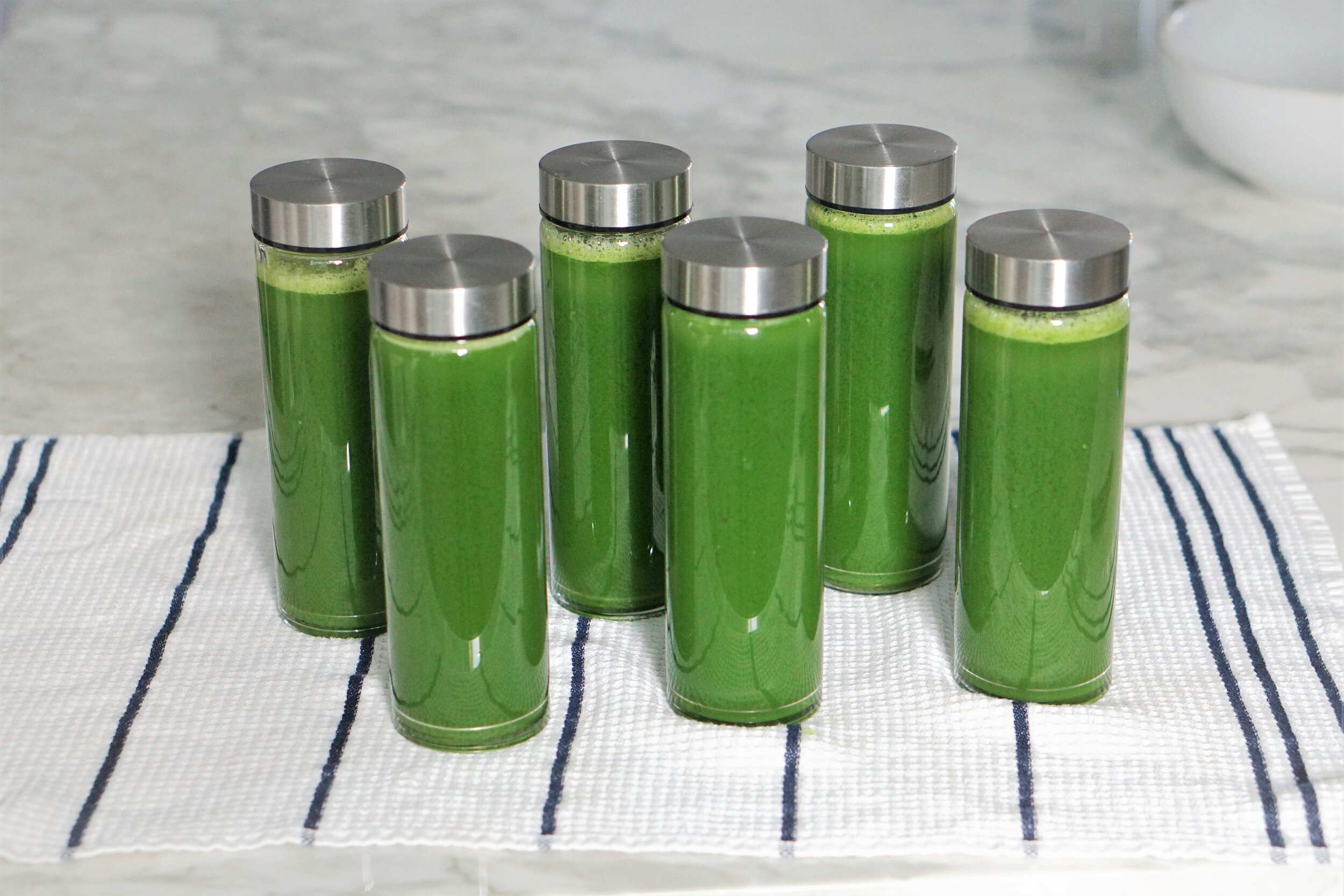Make Your Own Green Juice
*Originally posted August 21, 2020, last updated March 2, 2025.
The benefits of drinking fresh green juice daily are difficult to overstate.
Adding green juice to your routine is a great way to increase your intake of nutrient rich vegetables you may not otherwise eat. Greens contain concentrated amounts of nutrients like vitamin C, vitamin A, vitamin K1, vitamin B6, potassium, calcium, magnesium, copper and manganese.
Energy Boost
Because you bypass having to break down vegetables, micro-nutrients are almost immediately delivered to your system. The result is a quick energy and mood boost.
Skin Benefits
Skin health is inextricably tied to gut health. When regularly fueling your body with the nutrients it craves, it shows in your skin. I personally have experienced reduced redness and fewer breakouts since regularly drinking green juice.
Digestion
Since vegetables and fruits in juice are already partially “digested,” your body absorbs nutrients without having to break it down as much. This aid in digestion is especially helpful if you have digestive issues.
Getting The Most Out Of Your Green Juice
If you’ve ever made your own green juice, you can appreciate that unmistakable fresh nutrient-rich taste that makes the prep all worth it. You can also appreciate a superb juice bar.
Whether you’re a seasoned juice maker or new to the game, these steps will help you get the most out of each juice session:
Prep Ahead
Cut and wash produce ahead of time. Use a 1 to 3 water/vinegar solution or cleaner like branch basics all purpose to wash produce (especially those with a wax coating and non-organic items) or simply soak in water. Rinse until the water runs clear. Some vegetables like spinach have extra dirt and may require several rinses. Cut large pieces of produce to fit the size of your juicer opening. Remove skin of citrus and stems when present.
Type of juicer: masticating versus centrifugal
Centrifugal juicers use a sharp blade to slice produce, and spin contents fast to separate the juice from pulp. This process creates heat, thereby causing oxidation of nutrients and enzymes. Juice from a centrifugal juicer is best consumed immediately and must be consumed within 24 hours. Centrifugal juicers are loud and quick.
Masticating juicers slowly press produce using a drill-type device which then rotates to squeeze pulp away from the remaining juice. Juice from a masticating juicer lasts up to 72 hours. Compared to a centrifugal juicer, masticating juicers are quieter and slower.
Containers
Immediately store fresh juice in airtight containers to prevent nutrient degradation. I prefer glass containers with a wide mouth which makes them easier to clean. Avoid plastic which can contain BPA or other potentially toxic ingredients. You can purchase the exact ones I use on amazon by clicking here, and if these are unavailable, try these. These bottles are airtight, BPA-free and made of glass and stainless steel with silicone.
Price at the time of publishing is $33.99 for 4 bottles. As an Amazon Affilaite, I earn from qualifying purchases.
My Juicer
I use a Kuvings Masticating Juicer. I love it because it is powerful, quiet, and reliable with a small footprint (significantly quieter than a blender, for reference). Kuvings uses BPA-free parts and includes an additional sieve so that you get more juice and pulp comes out dry. Because it is cold pressed, the juice lasts up to 72 hours.
Price at the time of this writing is $449.95. Save on all Kuvings juicers and blenders with code ANDREA.
Green Juice Recipe
In years past I included various types of kale and spinach, but have since learned that these vegetables are best consumed cooked (thanks to @thehealthyelephantsclub). In leiu of kale and spinach, I recommend parsley and/or romaine.
This batch recipe yields approximately enough juice for 2 people for 3 days or 112 oz.
Ingredients:
1 bunch of romaine and/or parsley
1 celery bunch
6 large cucumbers
5 lemons
Tip: If you are drinking green juice for the first time and not finding it sweet enough, try adding green apple.











